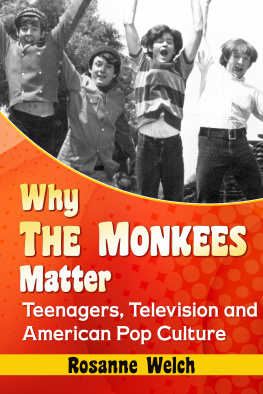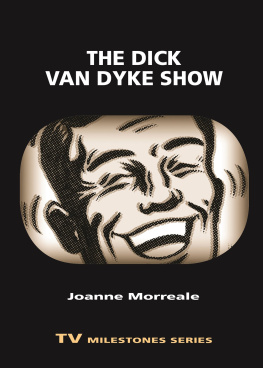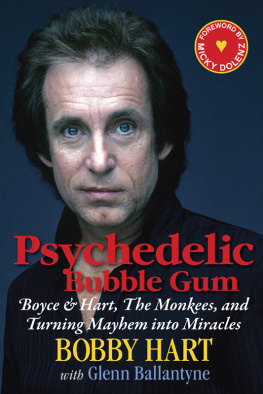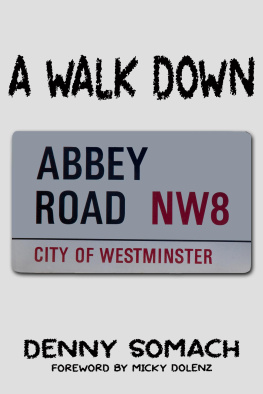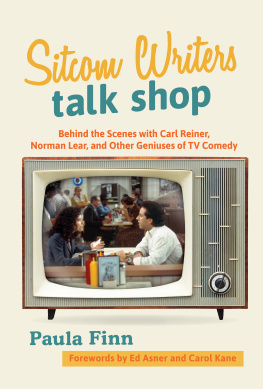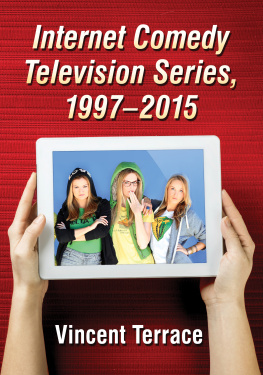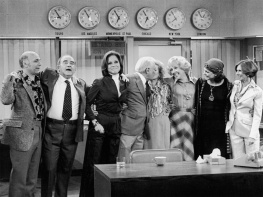
Why The Monkees Matter
Teenagers, Television and American Pop Culture
Rosanne Welch

McFarland & Company, Inc., Publishers
Jefferson, North Carolina
LIBRARY OF CONGRESS CATALOGUING DATA ARE AVAILABLE
BRITISH LIBRARY CATALOGUING DATA ARE AVAILABLE
e-ISBN: 978-1-4766-2602-4
2016 Rosanne Welch. All rights reserved
No part of this book may be reproduced or transmitted in any form or by any means, electronic or mechanical, including photocopying or recording, or by any information storage and retrieval system, without permission in writing from the publisher.
On the cover: shown from left Davy Jones, Mike Nesmith, Micky Dolenz, Peter Tork from The Monkees, 1966 (Photofest)
McFarland & Company, Inc., Publishers
Box 611, Jefferson, North Carolina 28640
www.mcfarlandpub.com
Preface: Im (Still) a Believer
This study started with writing a piece for Written By, the magazine of the Writers Guild of America, about the retired writing staff of The Monkees. Meeting this marvelous group of early television comedy writers reminded me how much they had contributed to the magic that became The Monkees and how much The Monkees had contributed to the myth and magic that became the 1960s. That first article offered a chance to prove once again that authorship belongs to the writers first, then, in no particular order, the actors and directors both in a critical studies actor-as-text definition and in the way actors collaborate with the writers in the creation of their characters. I disagree deeply with scholars like Aniko Bodroghkozy, who called the Monkees plastic hippies in her book Groove Tube: Sixties Television and the Youth Rebellion. I assert that they were actual hippiesboth on the show and in their personal lives. The fact that they became so popular with 12-year-olds in 1966 may have helped lead to the further participation of those same suburban students in the various protest movements of the early 1970s when those 12-year-olds became 18the protest for the vote for 18-year-olds; protests against the Vietnam War; protests for passage of the Equal Rights Amendment.
I think that the musical controversies, which began with the question of whether they played their own instruments on early recordings and extends to whether they belong in the Rock and Roll Hall of Fame (housed in my hometown of Cleveland, Ohio), continue to mask the real power of their existence as an Emmy-winning television program worthy of study in any critical studies context. The Monkees as a television show introduced young audiences to new ideas of political ideology, a new anti-military discourse and new concepts of class and feminist theory. The program raises metatextual issues of identity since the actors used their own names on the show. Though Micky Dolenz and Peter Tork, the real-life actors, were financially successful and lived in the Laurel Canyon area beside music icons John Densmore and Mama Cass Elliot, the characters of Micky and Peter lived on their own in a beach house in Malibu dreaming of success. Where did the actors end and the characters begin in the audiences mind? Why was it so hard even for other members of the entertainment business to forget that divide such that after the shows cancelation, casting directors wondered why drummer Micky Dolenz would want to audition for a role on a new pilot?
I did not come to this study as a new observer of the program. I was a fan from the beginning at the age of 6 when the show debuted on NBC and caused what I often tease was the first great choice of a childhood lived without benefit of DVR. Should I watch The Monkees or Gilligans Island? Both aired at the same time on different channels. I used that question as the thesis to an essay when many years later I applied to film schools and am amazed at how it still resonates with others of my generation. For my students in critical studies courses that choice harkens back to an unimaginable time before VCRs or DVRs or iPads, when one had to choose between two favorite programs and wait for summer reruns to see the one they had chosen to miss.
What Im not sure I ought to admit is that I concocted the pitch for the piece in Written By partly for an excuse to interview Micky Dolenz, the teen idol of my childhood. But I can tell you that the mere fact that I, a 50-year-old professional writer and academic, squealed when I hung up the phone after the interview and immediately called three or four of my oldest and best friends, attests to the power of The Monkees as a cultural touchstone for our generation. What makes the show even more special is that my 38-year-old cousin feels the same, having become a second-generation fan when she discovered the show being rerun on MTV for its 20th anniversary in 1986. As Rachel Maddow stated during an interview with Peter Tork, The teenagers of the 80s learned what it was like to be teenagers in the 60s in part due to watching Monkees reruns on MTV. That is a tall order for what began as a simple sitcom about a struggling rock and roll band, which tells us it was never so simple as we were led to believe.
A deep study into anything can teach us much about everything. Its why we teach critical studies in the first place and what brought me to this book in the second place. A note on style, use of first namesMicky, Davy, Peter and Mikerefers to the fictional characters and use of last names refers to the actor/musicians. The book can be used in academic settings in whole or in part, with chapters on feminism suitable for womens studies courses and chapters on identity construction appropriate for sociology courses and the whole book useful as a resource for critical studies and television history courses. But I also wrote it in honor of the fans who love the show and lived with years of teasing when the mistaken reputation of the band and the show as plastic kept dogging them. With this book I hope to show that those early and continuing fans all recognized the diamond in the rough from the start.
Much has been written about the Monkees, and a large amount is scattered across many books, books about the 1960s and books about the Beatles and books about teens on television and on and on. This book is the accumulation of all that information, a repository of all the Monkees mean to television and history and of all they meant to those successive generations from the 1960s to the 1980s to the 2010s who find them on television or on YouTube and fall in love with the four teens who were and are so much more than pre-fabbed creations. Chapters can be read individually based on topics of interest or in one fell swoop.
The Monkees has come to mean so many things over the yearsto me and to many others who have followed their careers both together and individually. As the band members said about singing Daydream Believer after Jones death, even they dont belong to themselves anymore. The Monkees belongs to the audience. The television network may have canceled the show but the performers made fans dreams come true by coming back together for concerts time and again over the years.
The documentaries have all been produced, the songs have all been written. There are few new memories to be mined. What is left is the interpretation of what it all meant. Thats where this book hopes to contribute to the enduring significance of
Next page
